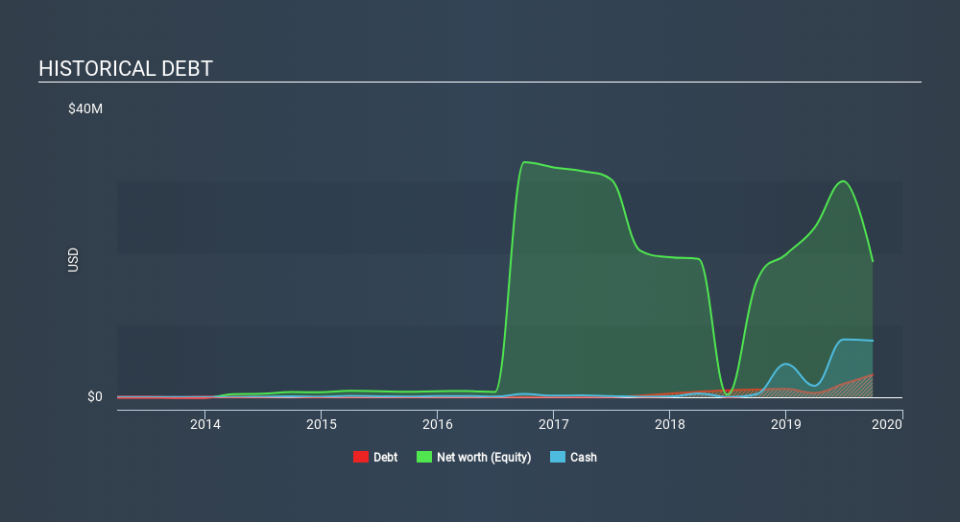Here's Why CleanSpark (NASDAQ:CLSK) Can Manage Its Debt Despite Losing Money

Howard Marks put it nicely when he said that, rather than worrying about share price volatility, 'The possibility of permanent loss is the risk I worry about... and every practical investor I know worries about. So it seems the smart money knows that debt - which is usually involved in bankruptcies - is a very important factor, when you assess how risky a company is. As with many other companies CleanSpark, Inc. (NASDAQ:CLSK) makes use of debt. But the real question is whether this debt is making the company risky.
When Is Debt Dangerous?
Generally speaking, debt only becomes a real problem when a company can't easily pay it off, either by raising capital or with its own cash flow. Part and parcel of capitalism is the process of 'creative destruction' where failed businesses are mercilessly liquidated by their bankers. However, a more frequent (but still costly) occurrence is where a company must issue shares at bargain-basement prices, permanently diluting shareholders, just to shore up its balance sheet. Of course, debt can be an important tool in businesses, particularly capital heavy businesses. The first thing to do when considering how much debt a business uses is to look at its cash and debt together.
View our latest analysis for CleanSpark
What Is CleanSpark's Debt?
As you can see below, at the end of September 2019, CleanSpark had US$3.11m of debt, up from US$1.1 a year ago. Click the image for more detail. But on the other hand it also has US$7.84m in cash, leading to a US$4.73m net cash position.
A Look At CleanSpark's Liabilities
The latest balance sheet data shows that CleanSpark had liabilities of US$1.50m due within a year, and liabilities of US$3.05m falling due after that. Offsetting this, it had US$7.84m in cash and US$834.8k in receivables that were due within 12 months. So it actually has US$4.12m more liquid assets than total liabilities.
This surplus suggests that CleanSpark is using debt in a way that is appears to be both safe and conservative. Because it has plenty of assets, it is unlikely to have trouble with its lenders. Simply put, the fact that CleanSpark has more cash than debt is arguably a good indication that it can manage its debt safely. The balance sheet is clearly the area to focus on when you are analysing debt. But it is future earnings, more than anything, that will determine CleanSpark's ability to maintain a healthy balance sheet going forward. So if you want to see what the professionals think, you might find this free report on analyst profit forecasts to be interesting.
In the last year CleanSpark wasn't profitable at an EBIT level, but managed to grow its revenue by 683%, to US$4.5m. When it comes to revenue growth, that's like nailing the game winning 3-pointer!
So How Risky Is CleanSpark?
We have no doubt that loss making companies are, in general, riskier than profitable ones. And in the last year CleanSpark had negative earnings before interest and tax (EBIT), truth be told. Indeed, in that time it burnt through US$6.4m of cash and made a loss of US$26m. However, it has net cash of US$4.73m, so it has a bit of time before it will need more capital. Importantly, CleanSpark's revenue growth is hot to trot. While unprofitable companies can be risky, they can also grow hard and fast in those pre-profit years. There's no doubt that we learn most about debt from the balance sheet. But ultimately, every company can contain risks that exist outside of the balance sheet. Be aware that CleanSpark is showing 6 warning signs in our investment analysis , and 1 of those is concerning...
When all is said and done, sometimes its easier to focus on companies that don't even need debt. Readers can access a list of growth stocks with zero net debt 100% free, right now.
If you spot an error that warrants correction, please contact the editor at editorial-team@simplywallst.com. This article by Simply Wall St is general in nature. It does not constitute a recommendation to buy or sell any stock, and does not take account of your objectives, or your financial situation. Simply Wall St has no position in the stocks mentioned.
We aim to bring you long-term focused research analysis driven by fundamental data. Note that our analysis may not factor in the latest price-sensitive company announcements or qualitative material. Thank you for reading.


